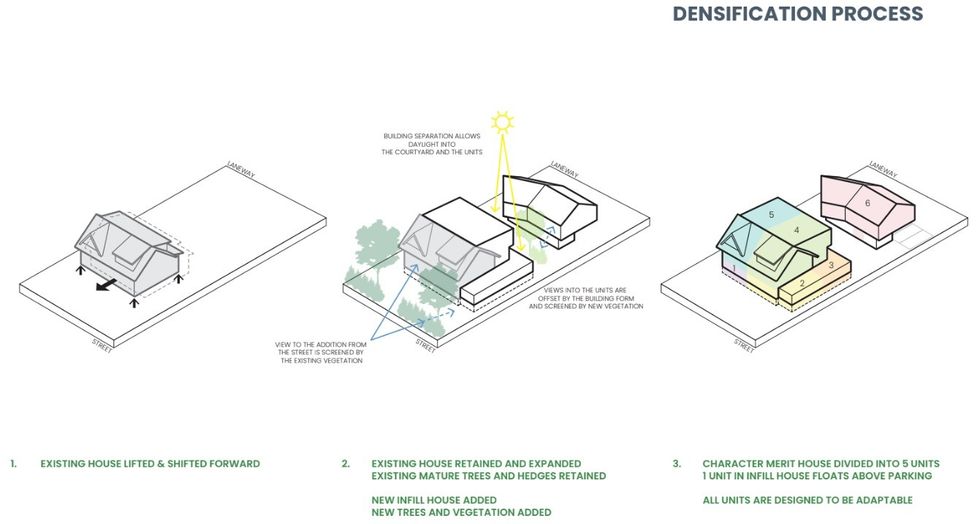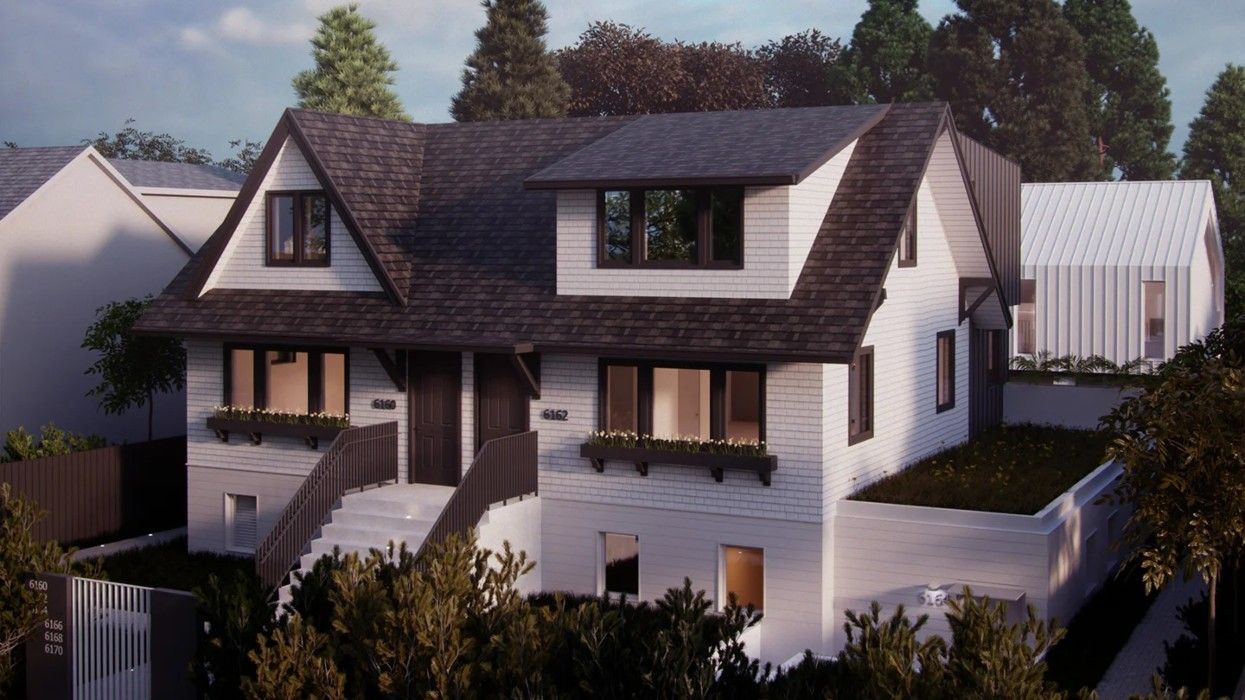On November 1, the provincial government announced a big piece of legislation that would override municipal governments and allow up to four units per single-family residential lot and up to six units for larger single-family lots that are also close to transit.
The changes, delivered through Bill-44, the Housing Statutes (Residential Development) Amendments Act, are expected to result in an influx of over 130,000 new missing middle homes — or "small-scale multi-unit housing (SSMUH)," to use the Province's preferred term — within the next 10 years.
In early December, the Province followed up with a policy manual providing further details about the changes, including implementation, standards, and more.
Since then, STOREYS has spoken to various experts in the housing and development industry, and the general consensus, at least for now, is that while the legislation is a good move, it remains to be seen how much of that small-scale multi-unit housing we will see in reality, due to a variety of reasons.
"The question, I think, on many people's minds, is how much of this will happen and how quickly, because there's no doubt it's going to take a while to transition into the new zoning," says Michael Geller, an adjunct professor at Simon Fraser University and real estate consultant. "I think that there will certainly be situations where individual homeowners, who may have an older house on a larger property, will decide that they're going to take advantage of this legislation, and hire a designer or architect, and eventually hire a builder, and redevelop the lot that they may have lived on for many years. But I suspect that they will be in the minority."
That's because of the higher degree of difficulty when it comes to building multiplex homes, paired with individual homeowners presumably having less experience when it comes to development, not to mention macroeconomic conditions — high interest rates, construction costs, labour shortages — that are even giving British Columbia's biggest developers some trouble.
"As a single-family home owner, am I concerned about my neighbourhood changing by having a bunch of infill lots? No, I'm not, because I've done those for 20 years and I know how hard it is," says Rocky Sethi, Managing Director of Richmond-based developer Stryke Group. "I don't think that's going to change with the wave of a wand."
Sethi says that he thinks the legislation is a positive, but that it's essentially taking the responsibility of delivering housing and put it on the individual homeowners, who presumably cannot deliver housing at scale.
"It's so difficult to do this," he adds. "It's difficult for people to build a single-family home. I've talked to lots of friends who are building custom homes for themselves and they're pulling their hair out or getting divorces over them. It's hard. But I like the legislation. I think it's a step in the right direction."
It's more likely, Geller adds, that it will be builders who proceed with these kind of multiplex projects, snatching up properties themselves and developing them on a speculative basis.
Another very critical aspect that could potentially become a problem and prevent multiplexes rising en masse, Geller believes, is infrastructure and services.
"I suspect we will hear a number of municipalities say, 'Look, we simply don't have the services — water, sewage — in many of these neighbourhoods to support too many projects,'" he says. "They'll obviously be able to support some, but it won't be adequate to support the mass redevelopment of neighbourhoods.
One such example of this issue is the Cambie Corridor in Vancouver. In May, Council approved a rezoning of large swathes of the neighbourhood — the second phase of an ongoing initiative to allow more townhouses and rowhouses. The reason this undertaking has been done in phases, however, with the City rezoning a few hundred lots at a time, is because of infrastructure capacity and limitations, the City said.
The Province evidently recognizes that this may be an issue, saying in their policy manual that "increased residential density resulting from zoning bylaw changes intended to align with SSMUH requirements may impact utilities like water, sewer, and stormwater, as well as services like roads, parks, and garbage collection."
The Province is thus recommending that municipal governments closely monitor uptake over the first few years, with a focus on the type of new units and their locations, in order to make informed assessments on the infrastructure impacts and any needed adjustments when it comes to infrastructure projects.
Also perhaps recognizing the aforementioned difficulties of getting multiplex homes built, the Province announced last month the Standardized Housing Design Project, which will create a set of standardized, but customizable, designs for SSMUH, lowering some of the barriers of entry for homeowners. The Province is in the process of choosing a consultant for the project.
David Long, Principal at Vancouver-based Design Architecture Everyday (DAE), points to a SSMUH project his firm is working on that's set for 6162 Granville Street in Vancouver as an example of what a sixplex can look like. For the project, which received approval from the City in February, DAE will convert a single-family residential lot with a home built in the 1920s into a lot with six residential units through an expansion of the existing home and the addition of a laneway home.


Like Geller and Sethi, Long recognizes the difficulties individual homeowners will face.
"It is a challenging proposition for individuals to navigate the hurdles of dealing with municipal planning departments, raising capital, negotiating debt, designing, construction management, and sales," says Long. "Ultimately, this leads to a lower take-up since individual owners are forced to navigate the process on their own, or owners are enticed to walk away and sell their homes to private developers."
Long has partnered with commercial real estate investor Ryan Tam and development consultant Nitasha Rajora to create Built Better Group, which will help homeowners navigate the process. They're hopeful that uptake will increase after the first few years as homeowners start to see what SSMUH can look like, resulting in the "democratization of the development industry."
In the coming year, the Province will begin distributing a total of $51M to municipal governments to help them meet the new SSMUH requirements. Municipalities are then required to have updated their zoning bylaws by June 30. From there, the waiting and counting will begin.
- Interview: Ravi Kahlon On His First Year As BC's Minister Of Housing ›
- New BC Legislation Will Override Cities, Allow 6 Units Per Lot ›
- Questions Remain About BC's Transit-Oriented Development Policy ›
- How Much Money BC's 188 Cities Are Getting To Implement New Housing Legislations ›
- How Major Municipalities Are Handling BC's New Housing Legislations ›
- City of Edmonton Introduces $39M Infill Infrastructure Fund ›





















